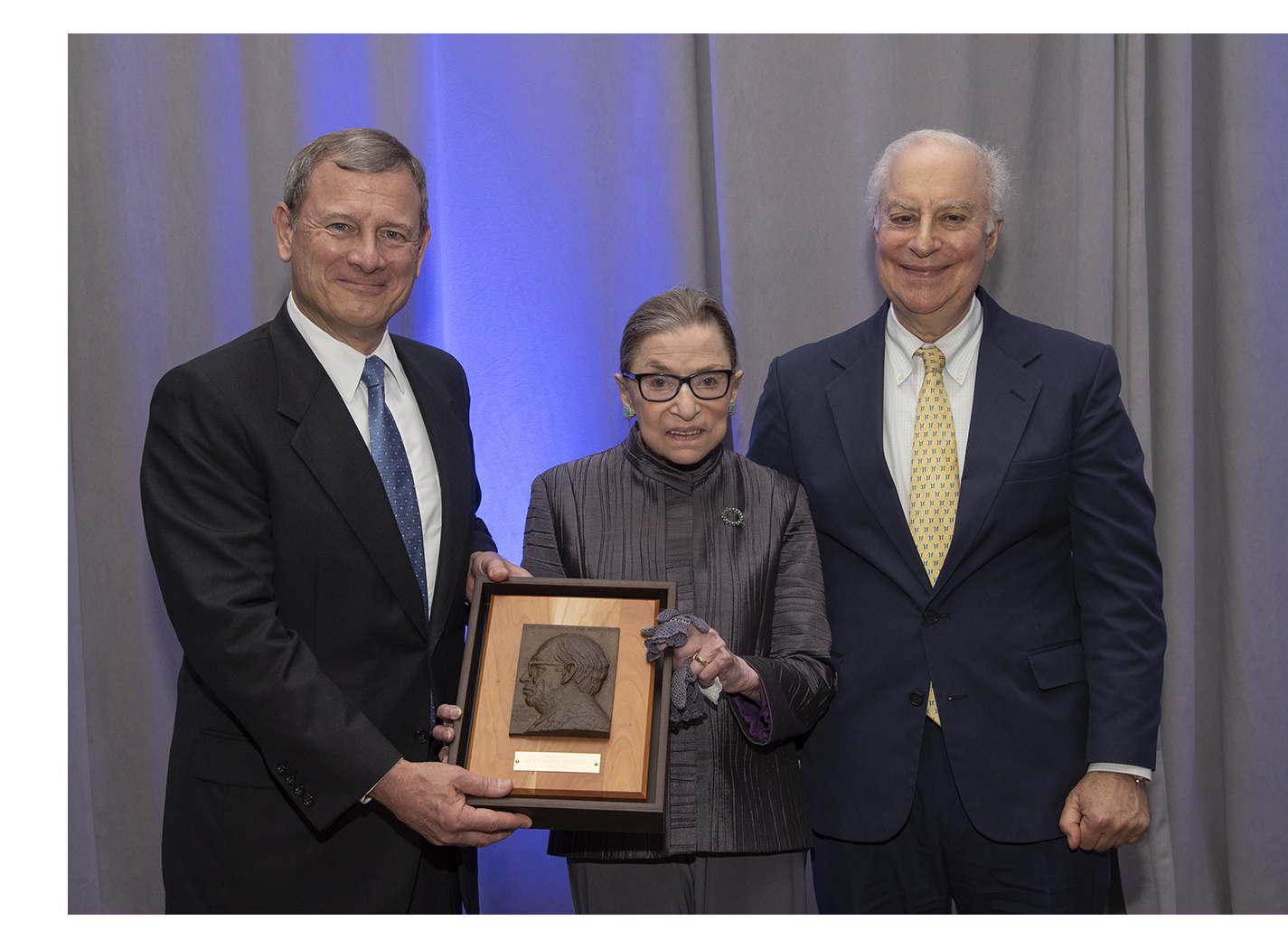I first met Justice Ginsburg in the early 1980s at an American Law Institute (ALI) Annual Meeting. I was a new Assistant U.S. Attorney. She was a somewhat newly appointed judge on the D.C. Circuit and was a member of the Council of the ALI. There was already a buzz around her. I was eager to meet her because she had been a student of Professor Gerald Gunther’s at Columbia in the 1950s, and Professor Gunther had helped her get a clerkship, her first job, which was no small feat for a woman at that time. Gerry and Justice Ginsburg had become close friends. I, too, had been a student of Gerry’s, also becoming a close friend.
 It was not until I became President of the ALI many years later that I really became comfortable around Justice Ginsburg. She seemed formidable although, as I came to understand, in reality, she was just a little shy. In 2018, the ALI awarded the Henry J. Friendly Medal to Justice Ginsburg. Chief Justice Roberts, a Friendly law clerk, graciously made the presentation. It was wonderful to see Justice Ginsburg so pleased, touched, and happy. In introducing the Chief and Justice Ginsburg, I remarked on Justice Ginsburg’s remarkable contributions to the law, particularly to gender equality. In receiving the award, in a bit of self-deprecating humor, she referred to her new found fame in the age of social media:
It was not until I became President of the ALI many years later that I really became comfortable around Justice Ginsburg. She seemed formidable although, as I came to understand, in reality, she was just a little shy. In 2018, the ALI awarded the Henry J. Friendly Medal to Justice Ginsburg. Chief Justice Roberts, a Friendly law clerk, graciously made the presentation. It was wonderful to see Justice Ginsburg so pleased, touched, and happy. In introducing the Chief and Justice Ginsburg, I remarked on Justice Ginsburg’s remarkable contributions to the law, particularly to gender equality. In receiving the award, in a bit of self-deprecating humor, she referred to her new found fame in the age of social media:
“A word about the notoriety I have recently attracted. It is amazing that at my advanced age, 85, so many people want to take a picture with me. T-shirts, tote bags, bibs, mugs, closet fresheners, coloring books, even tattoos bear my name and face. I suppose young people latched onto me because they yearn for something advancing society’s welfare to believe possible. And I fit that bill because I had the good fortune to be alive and a lawyer when society was prepared to accord equal citizenship stature to women. Helping to propel that change was enormously satisfying.”
One night at dinner in D.C. with the Justice and Neil Siegel, after one of Neil’s programs with Justice Ginsburg at the Duke D.C. Summer Institute, she was in a lively and expansive mood. She was among friends. The small group included Neil, whom she was so fond of, Stephen Wiesenfeld, one of her clients in the 1970’s in a well-known case with whom she maintained a strong bond, Stephen’s spouse Elaine, one of her grandsons, and me. She had personal and professional connections, from different points of her life and career, with everyone at the table. She was at ease, voluble, and engaging. We planned her next trip to North Carolina when she could come to Duke and also visit the Wiesenfelds. Sadly because of her own illnesses and the Coronavirus, this trip never happened.
In thinking of her, and trying to catch some aspect of her enormous influence, I would emphasize her professionalism as an appellate judge and Justice. Her opinions were clear and tightly reasoned. That’s part of the craft. But there was something more, symbolized by her long and loving friendship with Justice Scalia. Their friendship seemed such a surprise to many. But why? They were both New Yorkers of a certain age who loved opera, travel, good conversation, and the law. Their disagreements over cases was just part of what made the work so absorbing, and, as Ruth often said, Nino’s dissents made her opinions that much better. In the end, they were both judges, doing their job, enjoying the give and take— a model for the rest of us of professional civility and maturity in divisive times.
We will miss her example, her dedication to justice and the law, and her determination to give her all to her country, family, and profession.
The American Law Institute's quarterly newsletter The ALI Reporter features similar recollections of Justice Ginsburg from ALI Council Members.